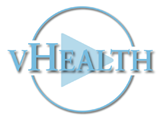Evaluation by accessibility index differences of the cross-border potential for general inpatient care in the Ems-Dollart Region, a Dutch-German cross-border area

All claims expressed in this article are solely those of the authors and do not necessarily represent those of their affiliated organizations, or those of the publisher, the editors and the reviewers. Any product that may be evaluated in this article or claim that may be made by its manufacturer is not guaranteed or endorsed by the publisher.
Authors
Access to healthcare in border regions is hampered by the very existence of the border and the limitations of cross-border cooperation between healthcare systems. This work examined the status quo of access to inpatient care at a high level of spatial detail and the potential impact of a cross-border cooperation in the Ems- Dollart border Region (EDR), a region located in the northern Dutch-German border area. A cross-border data model of inpatient care for Germany and The Netherlands was created using hospital beds as supply and 1-km² gridded population data as demand. The enhanced the two-step floating catchment area (E2SFCA) algorithm was applied to match supply and demand using road accessibility as intermediary. The model was calculated both for national and cross-border accessibility scenarios, with results standardised against national averages to account for systemic differences between German and Dutch healthcare settings. The resulting maps of spatial access to inpatient care capacity showed that the region has access rates below the national averages, with access rates in The Netherlands showing greater spatial variation than seen in Germany. The border appeared to be less important as cause of low access rates than other factors, such as the presence of the North Sea coast. The model results for cross-border hospital care showed a very local potential with access gains for only 2.2% of the population in the EDR, mostly in The Netherlands. This increase was drawn from wide areas with average and high access rates from both Germany and The Netherlands.
How to Cite

This work is licensed under a Creative Commons Attribution-NonCommercial 4.0 International License.








